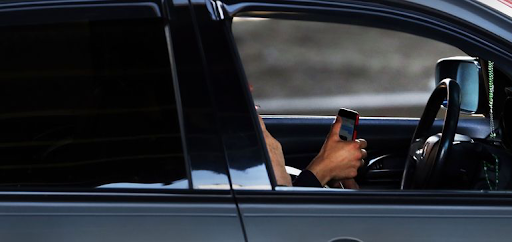Efforts to reduce distracted driving a ‘traffic safety culture failure’
Traffic Safety Pulse News
(Smartcities Dive) The Governors Highway Safety Association issued a report last week outlining more than two dozen recommendations to help states address the ongoing problem of distracted driving. 
According to the National Highway Traffic Safety Administration’s Fatality Analysis Reporting System, an estimated 3,142 people in the U.S. died as a result of distracted driving in 2020, accounting for about 8% of all fatal crashes. The GHSA report contends that the actual number is much higher.
GHSA urges local leaders to partner with community-based organizations and survivor advocates to help change the culture around distracted driving.
Dive Insight:
Driving while distracted is something that all drivers do at some time, and it’s not just about cellphone use. Eating, drinking, talking with passengers, daydreaming, and staring at crash scenes or roadside signs all take the driver’s attention from operating the vehicle.
“People both say it’s a major safety concern, but also refuse to look in the mirror and say, maybe I could be part of this problem,” said Adam Snider, GHSA’s director of communications.
The GHSA report, citing data from the National Center for Statistics and Analysis, states that in 2019, 424,000 people were injured in motor vehicle crashes involving distracted drivers and that 566 pedestrians, bicyclists and others outside the vehicle were killed in distraction-affected crashes.
Although 48 states and Washington, D.C., have adopted laws that ban texting while driving, and about half of all states prohibit handheld use of cell phones while driving, research cited by the GHSA report showed that drivers engage in potentially distracting activities more than 51% of the time they spend behind the wheel.
“The data has been fairly consistent over the past decade in terms of the percentage of crashes impacted by distracted driving,” Snider said. But, he added, “We need better and more data collection.”
It can be difficult to prove distraction as the cause of a crash, Snider explained, one of the problems contributing to under- reporting. Drivers are reluctant to admit they were distracted, he said, and police need a warrant to examine a driver’s mobile device.
Automakers, cellphone manufacturers and service providers, as well as insurance companies, could partner with states on data collection and analysis, Snider said. “Some additional data from some of these private sector companies could be a helpful way to get a better sense of how bad this problem is, who is most likely to drive distracted, and when and where.”
Both federal and state governments have an important role to play as well, the report said. Tools available to states to combat distracted driving include improved data collection and analysis, education and public outreach, infrastructure improvements, federal funds, and leadership for state agencies and partners.
State highway safety officers can advocate for stronger distracted driving laws. States can conduct media campaigns to educate the public on the dangers of distracted driving and can couple those with stepped-up enforcement efforts.
One such effort has been underway in Tennessee since 2017. For a few days each year, highway safety officers partner with the Tennessee Highway Patrol to observe driving behavior from the vantage point of a bus window. When officers on the bus observe a distracted driving violation, they communicate with patrol units which then engage with the offending drivers.
Snider also believes that it is important to “put a face on this problem,” he said. “There are people who have lost family members, friends, relatives and neighbors ... there are people dying every day in these crashes.”
The GHSA report concludes that the “fight against distracted driving has largely been a traffic safety culture failure.” It urges leaders at the federal, state and local levels to prioritize this issue and to follow the model established by Mothers Against Drunk Driving.
“We really just need a cultural reset,” said Snider. “We need to make distracted driving socially unacceptable.” To read the full article, click here.
